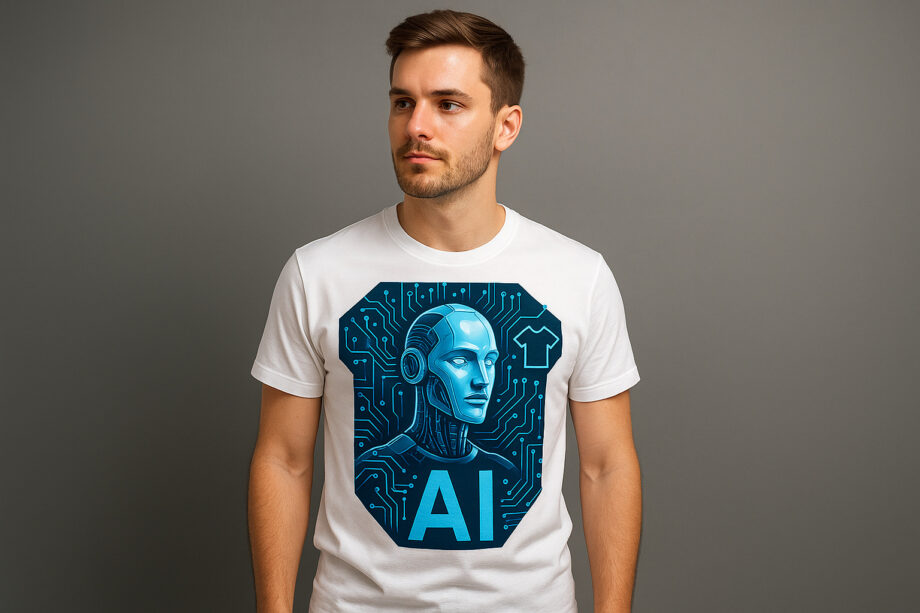AI is changing the way t-shirts are designed, produced, and even sold. What used to take weeks of brainstorming and manual labor can now happen in a matter of hours, thanks to advanced algorithms and creative automation. Whether you’re a seasoned designer or just someone passionate about fashion, understanding the rise of AI in t-shirt design opens up a world of new possibilities and trends you won’t want to miss.
The Rise of AI in T-Shirt Design: Trends and Innovations
Introduction to AI in T-Shirt Design
Artificial intelligence isn’t just for robots and self-driving cars anymore—it’s making a serious splash in the fashion industry, especially when it comes to t-shirt design. AI-powered tools are helping designers push creative boundaries, while brands are leveraging machine learning to keep up with ever-changing trends and customer demands. The combination of human creativity and AI-driven efficiency is reshaping how we approach apparel, from the first sketch to the final product.
With the rise of digital commerce and the need for more personalized shopping experiences, AI has become a go-to resource for brands seeking to stand out. In fact, 63% of apparel brands have integrated AI into their design and planning processes. This integration isn’t just about speed—it’s about smarter, data-driven decisions that help designers and brands create t-shirts people actually want to wear.
From automated design tools to predictive analytics, AI’s impact on the t-shirt industry can be seen at every step. As we dive into the latest trends and innovations, you’ll see exactly how technology is making t-shirt design more accessible, customizable, and sustainable than ever before.
AI-Driven Design Tools Transforming Creativity
Gone are the days when t-shirt design was limited to pen, paper, and a whole lot of eraser dust. Now, AI-driven design tools are empowering creators to experiment like never before. These tools use deep learning and image recognition to generate fresh design concepts, suggest color palettes, and even remix existing artwork into something entirely new.
One of the key benefits of AI-powered design tools is their ability to learn from massive datasets of past designs, fashion trends, and consumer preferences. This means designers can instantly access inspiration and guidance based on what’s trending, what’s timeless, and what’s uniquely them. For those who might not have formal design training, AI can help bridge the gap—making professional-quality designs more attainable.
Speed is another major advantage. AI algorithms have reduced sample creation time in apparel design by approximately 50%. Instead of waiting weeks for physical prototypes, designers can see realistic mock-ups in hours or even minutes. This boosts creativity and allows for rapid iteration, so brands can respond quickly to new ideas or market shifts.
On platforms like https://www.thisshirtexists.com, AI tools are helping both newcomers and seasoned pros push the boundaries of what a t-shirt can look like. With the right software and a little imagination, there are truly no limits to what you can create.
Enhancing Personalization with AI
Personalization is the name of the game in modern fashion, and AI is the ultimate game-changer. Today’s shoppers want more than just a standard tee—they want something that feels tailored just for them. That’s where AI steps in, analyzing user data, purchase history, and even social media trends to create designs that resonate on a personal level.
Imagine logging into your favorite t-shirt website and seeing a collection curated just for you, featuring designs that match your interests, favorite colors, or even upcoming events in your city. That’s not fantasy—it’s the reality AI is making possible. AI-powered recommendation engines can suggest products that align perfectly with each customer’s unique style, increasing satisfaction and loyalty.
-
The personalization doesn’t stop at what’s shown on the screen. AI-powered virtual fitting rooms can increase online conversion rates by up to 30%. Shoppers can see exactly how a shirt will look on their body type, minimizing guesswork and returns. This technology is a win-win for both brands and customers, making the online shopping experience more interactive and rewarding.
For brands, this level of personalization means better engagement and higher conversion rates. For shoppers, it means finding that perfect tee—every time.
Streamlining Production and Reducing Waste
AI isn’t just transforming how t-shirts are designed and sold—it’s also revolutionizing how they’re made. Traditional apparel production can be wasteful, with excess inventory and imperfect quality control leading to lost profits and environmental harm. AI tackles these issues head-on, making production smarter, faster, and greener.
By leveraging AI for inventory management and demand forecasting, brands can produce exactly what’s needed—no more, no less. 70% of apparel companies implementing AI reported improved inventory management and demand forecasting. This means less overproduction, fewer unsold items, and a more sustainable approach to fashion.
Quality control is another area where AI is making waves. 55% of apparel manufacturers are using AI for quality control, reducing defect rates by up to 40%. AI-powered cameras and sensors can spot fabric flaws or printing errors far more accurately and consistently than the human eye, ensuring that every t-shirt meets high standards before it ships out.
On the production floor, AI-driven pattern making and automated sewing robots are streamlining workflows and slashing costs. The use of AI in pattern making can decrease production costs by approximately 20%. These tools not only speed up manufacturing but also minimize fabric waste, supporting a more eco-friendly supply chain.
AI algorithms have reduced sample creation time in apparel design by approximately 50%. Faster sampling means fewer resources wasted on designs that don’t make the cut, translating to a leaner, more sustainable process from start to finish.
AI’s Role in Trend Forecasting and Market Analysis
Staying ahead of trends is crucial in the fast-paced world of t-shirt fashion. AI excels at sifting through mountains of data—social media posts, online searches, sales reports—to detect emerging patterns before they hit the mainstream. This gives brands a crystal ball into what customers will want next season, next month, or even next week.
AI can analyze everything from color preferences to popular slogans, helping designers and marketers make data-driven decisions. With this insight, brands can create collections that are more likely to resonate with their target audience, reducing the risk of flop designs and missed opportunities.
AI’s predictive powers also extend to supply chain management. 80% of fast fashion retailers utilize AI to optimize supply chain logistics and reduce lead times. By forecasting demand and adjusting production schedules in real time, brands can keep shelves stocked with the right products—no more, no less.
For those in the e-commerce space, AI-powered analytics tools are a game-changer. They provide actionable insights into customer behavior, allowing brands to tweak marketing strategies, test new designs, and fine-tune their offerings. The end result? A more agile, responsive approach to t-shirt design that puts customers—and trends—front and center.
Challenges and Ethical Considerations
While AI offers a ton of advantages, it’s not without its challenges. One major concern is the potential loss of the human touch in design. As algorithms take over more of the creative process, some worry that originality and authenticity could be sacrificed for efficiency.
Ethical issues also come into play. AI systems are only as unbiased as the data they’re trained on, meaning there’s a risk of perpetuating stereotypes or excluding certain groups from design trends. Additionally, the automation of production and design tasks raises questions about job displacement for traditional artisans and factory workers.
Protecting intellectual property is another big issue. As AI tools remix and generate new art, it can be tough to determine who really owns the resulting designs. Brands and creators need to keep these concerns in mind as they embrace new technology, ensuring that innovation doesn’t come at the expense of fairness or creativity.
Future Outlook: AI’s Evolving Impact on T-Shirt Design
The future of t-shirt design is looking bold, bright, and incredibly smart. As AI continues to evolve, expect even more seamless integration between creativity and technology. Soon, we could see AI collaborating with designers in real time, generating one-of-a-kind prints based on live events or trending memes.
With ongoing improvements in data analysis, personalization, and production efficiency, the t-shirt industry is poised to become more responsive to individual tastes and global trends alike. The use of AI in pattern making can decrease production costs by approximately 20%. Innovations like these will make it easier for new brands to enter the market and for established players to stay ahead of the curve.
Ultimately, the rise of AI in t-shirt design isn’t about replacing human creativity—it’s about enhancing it. By automating the mundane and unlocking new possibilities, AI empowers designers, manufacturers, and shoppers to imagine, create, and wear t-shirts like never before. If you want to see these innovations in action, check out the latest at https://www.thisshirtexists.com.


